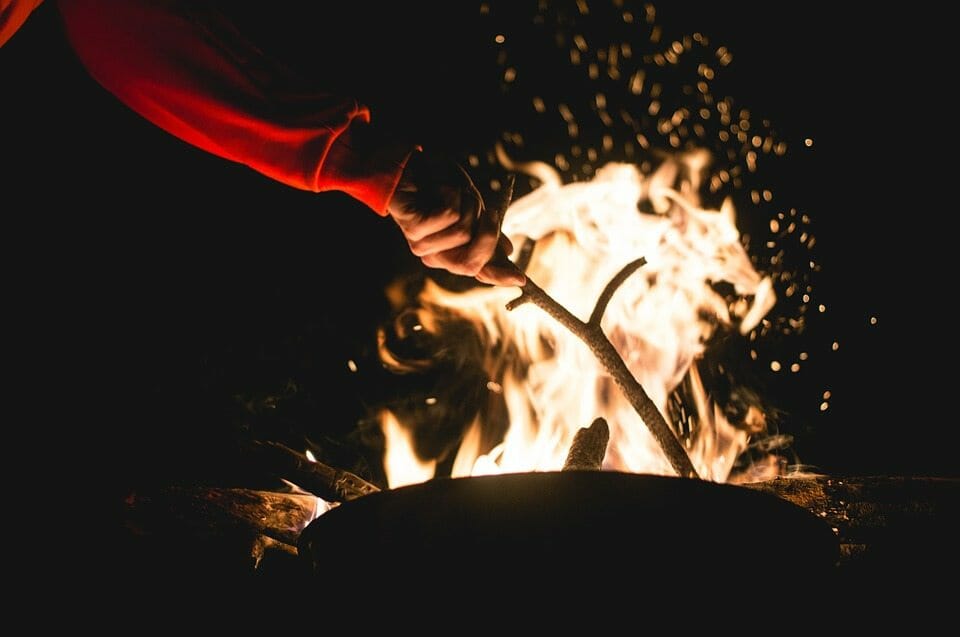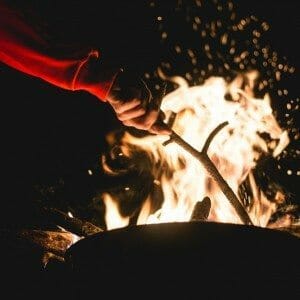
 More than 100,000 wildfires burn 4-5 million acres of land every year in the United States, according to an article published by National Geographic. While lightning strikes are a common cause of wildfires, extinguished campfires are also responsible for many wildfires. So, if you’re planning to camp in the near future, you’ll want to fully extinguish and cool your campfire before leaving.
More than 100,000 wildfires burn 4-5 million acres of land every year in the United States, according to an article published by National Geographic. While lightning strikes are a common cause of wildfires, extinguished campfires are also responsible for many wildfires. So, if you’re planning to camp in the near future, you’ll want to fully extinguish and cool your campfire before leaving.
Beware of Hot Embers Underneath Ash
Just because you see a pile of ashes left at the bottom of your fire ring doesn’t necessarily mean that your campfire has been extinguished. Ash is an excellent insulator of thermal energy, meaning it can keep embers hot enough to ignite a fire for up to 24 hours.
Some people assume that their campfire is out because they see ash at the bottom, but you really need to take additional steps to ensure it’s extinguished. Hot embers buried under the ash could reignite the following day to create a wildfire. So, how do you prevent this from happening?
Drown with Water
The only “sure-fire” way to extinguish a campfire is to drown it with water. While keeping a safe distance, slowly pour water over the campfire and its embers, even if those embers are not bright red. You’ll probably hear a hissing noise when doing so, which occurs from the water’s reaction to the heat. You’ll know the fire is extinguished when the hissing noise stops.
Stir with a Stick
In addition to drowning your campfire with water, you should also stir it with a stick (after drowning it with water). The purpose of this is to ensure the water has penetrated all layers of the fire. If there’s still a hot later, you may hear the hissing noise again when stirring the fire with a stick.
Here are some other safety tips to follow when building campfires in the wilderness:
- When possible, use an existing fire ring to build your campfire instead of creating a new one.
- Only burn wood in your campfire, not trash or debris.
- Keep water nearby in case your campfire burns uncontrollably.
- Consider the direction in which the wind is blowing when choosing a location for your campfire.
- When camping in parks, check to see if there’s a fire ban in place or other restrictions for creating campfires.
If you have any questions regarding how an S&S Fire Pit can enhance your outdoor living space; We can help. https://ssfirepits.com/contact/


